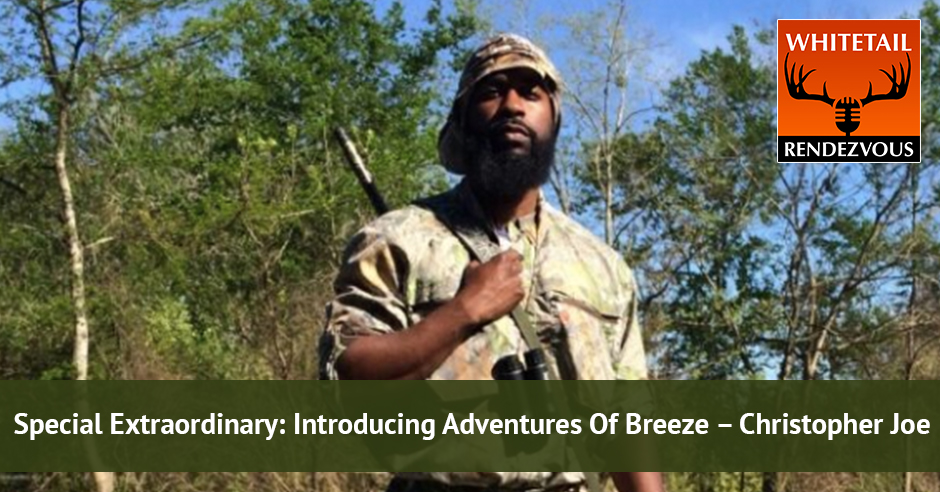
Experiencing the outdoors is a gift, and it is a gift that is a joy to share. In this episode, Christopher Joe of The Adventures of Breeze shares his dream and goal for people to experience the outdoors through Joe’s Black Angus Farm, which Christopher’s family owns. Christopher got into hunting early and developed his passion for the outdoors from his dad. Since then, he has been promoting smarter ways to farm. In this episode, he shares how resources can be more managed if people are only more knowledgeable and talks about the role of the youth in farming and hunting.
—
Listen to the podcast here:
Special Extraordinary: Introducing Adventures Of Breeze – Christopher Joe
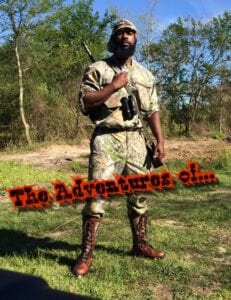 We’re going to head down to Newbern, Alabama and I’m going to connect with Christopher Joe. Christopher works for the Department of Agriculture. He’s also ingrained in the soil, culture, woods of Newbern, Alabama at Joe’s Black Angus Farm. Christopher, welcome to the show.
We’re going to head down to Newbern, Alabama and I’m going to connect with Christopher Joe. Christopher works for the Department of Agriculture. He’s also ingrained in the soil, culture, woods of Newbern, Alabama at Joe’s Black Angus Farm. Christopher, welcome to the show.
Thanks for having me. I appreciate it.
We got together through Instagram. What we wanted to do here is let you know Christopher’s dream and his goal for the farm. It isn’t raising cattle and what they do on that. They’ve done that very well for a long time but he’s got a goal and dream that he wants to share with everybody about what he’d like to see happen on the farm. Life is different for a lot of people. They’re going to offer their farm as an opportunity to maybe for the first time in your life walk in the woods at 5:00, 4:00 and hear the woods come alive. Even better yet, stay in the woods until it gets dark and hear the woods come alive again. With that, the mic is yours, Christopher.
I want to start by saying it’s always a pleasure to speak from an area of doing it. A lot of people discuss things and it’s, “I read this in a book and I heard somebody say this.” Hunting has been a passion of mine. I grew up doing it. I started early in life. I guess eleven or twelve, dad took me squirrel hunting. All of this was done on our family farm, third-generation Black Angus farmer from Newbern, Alabama. In the South, mostly in the areas that we have, a lot of people do catfish farming, cattle, and some row-crop farming goes on further south Alabama and some other places. I got into hunting early and I developed that outdoors passion from my dad. Growing up on a farm, you got up early on Saturdays. Even if you come home from the school, if the hay’s needed to be hauled out to the field, you had to get your homework quickly and then we went down to the farm. We live in Greensboro, Alabama. I was born in Greensboro, Alabama. The farm was about ten minutes from our house. We weren’t raised on the farm. It’s where my dad grew up. It was his family land.
We’d pretty much go down there and we have cattle. I started the idea of wanting to do something different with our farm once my father retired. He’s an agribusiness teacher of 34 years. When he retired he said, “I’m going to go down to the farm and I’m going to expand the farm.” I will grow the farm to where he wants it to be. It’s his passion to raise cows, to work the land, to work the soil. We officially started our nonprofit organization called the Hale County Minority and Disadvantaged Farmers Educational Foundation. I know it’s a mouthful but that name pretty much tells who we’re trying to take agriculture to. There are a lot of disadvantaged farmers that may not necessarily have the means to go out there and purchase that top-quality bull. They might not be able to purchase the equipment. How can we use the knowledge that we have and the property that we have to show somebody else?
You have to show people that there are smarter ways to farm. Share on XThat’s where my father came in to, “Let’s make it a demonstration site.” We already do things. We do our own hay. We do our own veterinary things, tag cows, give cows shots, herd them. We do everything ourselves. If somebody is new to farming, they may have questions. That’s where mentorship comes from. You can mentor people about farming, “I have ten acres. I may want two or three cows. What’s my best way? How do I make money in this?” The funny thing is I had a conversation with a landowner from California. A lady probably in her late 30s. She pretty much called me saying, “I have some property my grandparents gave me and I want to do something with it. I have 24 acres of hay and Bermuda grass. There are some cows out there but I want to expand it and make money. How do I make money?”
Those are the things where our nonprofit comes into play is that we can show these things. We’re working with the Tuskegee University, it’s a historical land-grant university here in Alabama, Alabama A&M Extension Service and a host of other organizations. We put together events to show or let other farmers come in, bring in experts, do field trials, do field days to where you can show a person, “This is how you take a soil test.” A lot of people don’t know how to take a soil test. Whitetail deer hunting and food plot management, all those things can be tied together because the same soil improvement that you’re trying to make for cattle, you can do the same thing with deer.
Deer are not going to eat crappy grass, that’s how it is. Soil tests will give you those amendments that you may need to add to the soil. I started with my YouTube channel. I posted my first video back in January the 9th of 2019, but the idea of the channel came back in November. I wanted to show people through video of these things I’m doing, riding around the farm, checking game cameras, showing people what’s on a game camera, how you turn it on, where do you point it, how do you pick a location, planting the food plots. I have a couple of videos of food plot planning from start to finish. I have a video of my self-hunting in it and harvesting one close by.
These are the things that as outdoor enthusiasts, it’s like we have our community that we’re in, but outside people may not get a good look into it. Even on TV, the Outdoor Channel is not a regular channel that most people can get. How do they find out about us? How do they find about taking care of the land or taking care of the soil or growing food? That’s a lot of what we do. We grow food for animals. People wouldn’t know that. They think, “They go out there and shoot deer and they don’t even do anything with the deer.” There’s a food processing plant not too far from our place. We’ve hunt deer and done that ourselves. You can give back to the community in that way. Even if you don’t eat the animals, you’re like, “I just want to hunt. I like the hunt.” You can donate that meat. You can donate all kinds of things to the community.
There are needs that I see that I’m trying to meet with the YouTube channel that I have. I’m out promoting wildlife. I’m out promoting conservation practices that will, in turn, help people to make something of their property. The average age of a farmer is getting up there, if we don’t replenish or show people that there’s a different aspect to farming besides, “I’ve got to wake up at the crack of day. I’m barely going to rake and scrape by. I might make a living and I might not.” You have to show people that there are other ways, there are smarter ways to farm. There’s equipment out now where you don’t have to use that busted up piece of equipment that great-grandpappy or grandpappy had that’s every time you make a half-circle you’re getting back off to go fix something.
That’s the same with planting food plots. Good equipment, the know-how and safety as well is very important. We don’t want people getting injured hunting. I did a couple of safety videos of getting up in the deer stand and getting down out of the deer stand, where do you put your gun, how do you hold your gun, things like that. We think it’s pretty easy because we’re hunters but we’re trying to show people a safer way. We have guns but if you handle the gun appropriately, you will alleviate a lot of the issues that could come about. I have a trusty stand that I use most of the time for my phone and I set it up when I record. I set it down and did that safety talk showing how you hold your gun. Always keep it unloaded. Don’t put one in the chamber and try to cross a fence or climb up something. If the gun falls down, you might say, “A gun doesn’t go off if you drop it.” I don’t think I want to take that chance.
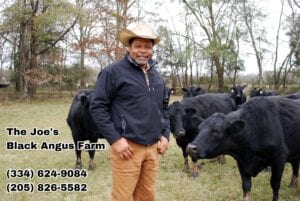 I use my YouTube channel as a recruitment tool, as a way to educate, as a way to show a different side of the outdoors that a lot of people don’t get a chance to see. A lot of my followers tune in or they will message me and say, “When are you going back home to hunt? Or the last thing you did was pretty cool, but I like how you did this. Why did you put the tag in the cow’s ear like that?” It’s a whole host of things that as outdoor people, we can start to trumpet out a lot more and make people aware of the things that are available to them. Making our farm a demonstration site, an educational site, open to the public, and doing agritourism is a way to get people in those surrounding areas a lot more familiar with what we enjoy as hunters. I’m thinking of what other ways I can reach people. Speaking with you is a new way that I can reach out because the area or the people that you know are different from the people that I know.
I use my YouTube channel as a recruitment tool, as a way to educate, as a way to show a different side of the outdoors that a lot of people don’t get a chance to see. A lot of my followers tune in or they will message me and say, “When are you going back home to hunt? Or the last thing you did was pretty cool, but I like how you did this. Why did you put the tag in the cow’s ear like that?” It’s a whole host of things that as outdoor people, we can start to trumpet out a lot more and make people aware of the things that are available to them. Making our farm a demonstration site, an educational site, open to the public, and doing agritourism is a way to get people in those surrounding areas a lot more familiar with what we enjoy as hunters. I’m thinking of what other ways I can reach people. Speaking with you is a new way that I can reach out because the area or the people that you know are different from the people that I know.
If I can reach some of your people and they can see, “They’re doing this down here in Alabama. They’re selling black Angus cattle. They’re doing it this way. How are they doing it? I want to go down there and see what they do.” That’s more than up our alley. My dad doesn’t mind. Anybody that wants to come, watch cows, feed cows, he’s more than happy to show that. Even during hunting season, we have plenty of deer stands. We have more deer stands than we have hunters. We have a small hunting club so it’s like the three of us. The way I manage it is I have about eight food plots spread out across 200 acres. We’ve had some of our best hunts in the past couple of years. The rut has been off a little bit because of the weather. I don’t know how many of you out there know about Alabama weather but it’s very unpredictable. It throws off the animals some.
The rut goes to different places throughout the months. This past time, I didn’t see anything at all in November. I didn’t kill anything until January. It’s trying to a hunter but it lets you try different things in the woods that you hadn’t tried before. I stay online a lot. I like listening to other hunters on what they like to do, “I tried this trick. This trick worked. I like to get in this area. I like to come back a little bit from a food plot. I don’t even hunt at a food plot.” Those are things that I tried over the years that made me a little more successful and then I added my own thing to it based off of where I hunt. I hunt on our property. I probably can hunt other places but there’s something about me hunting on the land that I’ve worked and the land that I grew up on. Seeing these deer that I have on camera, and then knowing that they will be here two or three years down the line. I killed one buck that I had on camera a few years ago and finally got him.
The passion for it is what makes me continue to do. I’m looking into the agritourism, looking into how do you make your land area to where you can start going into different avenues. You’ve got Black Angus cows but you also have nature. Nature preserves, nature organizations, nature societies, bird watching societies, you can pull together all these different things from getting out there. Talking to you now, I may grab a hold of somebody else that’s interested in it. The recruitment side of hunting is where we need to get a little more down to earth on. Sometimes you’re picking up a magazine you think that, “My little five acres is not any good My ten acres is not any good. If I don’t have this and this and that, I won’t be able to be a successful hunter. I might as well give up on turning my little grandfather’s land or the land that my parents left me to make something out of it.” Technically you can do something. You can manage what you have if you have the know-how to do it or know where to go.
That’s what I do a lot with our farm. Most of these videos show them how to make this food plot that makes along a creek. “How do I make a trail? I have an old bulldozer my grandfather had. I can crank it up but there are trees everywhere. How do I go about making the food plot? How do I cut trails to it to where I can hunt from different lands?” Hunting makes you a meteorologist. I know most hunting seasons I go and pull weather from the Weather Underground or some other weather sites and look at, “This is weeks ago. It’s been like this. The weather has been 70s but next week it’s going to go from 70 down to 50. I might need to be out on that 50-day.” It’s those simple things like that.
If a person is like, “I’ve been hunting in 70 degrees and I haven’t seen nothing.” It puts a bad taste in their mouth about hunting, “Every time I go out, I won’t see anything. I’d rather stop while I’m ahead. I don’t even want to hunt anymore.” If you can show a person that all you had to do is wait on those cold days. Don’t go to that same stand every day. It might be a day where you say, “The wind is kicking a little high. It’s blowing into the wooded area where they probably bed at. Maybe it’s not a good day.” Simple tips and tricks like that will help a lot of people out with deer hunting. That’s what I learned talking to other hunters, looking at different websites and channels that have that information. Piecing it together and applying it to my hunt. When I get up and it’s a rainy morning, the temperature is going to drop come 2:00, instead of sitting up in that stand getting wet, I may wait until 10:00 to get in the stand. When the temperature drops about 1:00, the deer starts moving then you’re increasing your chances.
There’s a huge middle ground of people that are clueless about hunting and have never experienced it. Share on XWe don’t have GPS tracker on the deer. You’ve got to use some other factors that are known to you. The temperature, wind speed, pressure, all that is very important that I find out during deer hunting. Using their nose against them is a great tool that I’ve found that I use a lot more frequently than I used to years ago. Drag rag has helped me with my last three deer that I harvested. They all came in like I had them on a fishing hook and they just came. The area where I walked that trail. I walked along a creek because I knew the creek was a little too wide for them to cross. I knew where they bed. I knew by about roughly who was in that area. Please invest in game cameras. I don’t know how high that is on your list but you can’t put a good value on a deer camera because it’s going to help you find where they are. If you have five cameras out and you know they show up most of the time on those two, instead of trying to be everywhere, focus on those two. Give that some time and hunt those areas where they show up the most. That will increase your chances.
I have a drag rag. I dipped it in some of that old smelly stuff and walked along the trail at about 3:00 in the evening. Evening hunts seem like they work better for us down here. The majority of the deer I’ve killed mainly has been in the evenings right at 5:00. The last two were at 5:00 and then 5:20. I killed maybe one or two early in the morning but it still is 10:00 or 10:30. I don’t know what it is about our deer. That’s another thing about Alabama. Everybody’s area is different. You arrive by a deer processing plant and you will see a herd of deer stacked up one day and you’re like, “I didn’t see anything in the woods.” It fares like that. The drag rag has helped me out a lot more than in the past. It was something that I implemented into my hunting regimen and has helped me a lot.
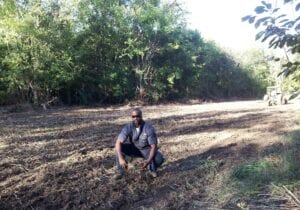 I’m into showing people the outdoors. There are some grants that I’m working with on, some organizations related to health. When people think of health, all they think of is fitness center or they think of, “I’ve got to go eat this food that I’m not keen on eating.” What we’re doing with our nature trails is making that open as a walking trail, nature preserve. To an average person, six miles is a lot but we have it broken up into different sizes. It’s six miles total but there’s an area where you might want to walk a little piece and you can do that. That’s what makes our land a lot more open to different organizations is that we’re offering these tools. We have a house on-site where people can come park. We have a facility there.
I’m into showing people the outdoors. There are some grants that I’m working with on, some organizations related to health. When people think of health, all they think of is fitness center or they think of, “I’ve got to go eat this food that I’m not keen on eating.” What we’re doing with our nature trails is making that open as a walking trail, nature preserve. To an average person, six miles is a lot but we have it broken up into different sizes. It’s six miles total but there’s an area where you might want to walk a little piece and you can do that. That’s what makes our land a lot more open to different organizations is that we’re offering these tools. We have a house on-site where people can come park. We have a facility there.
Other health organizations can come to do health screenings. We think about hunters. We think, “We’ll have guns, camo, bullets, that’s all I need.” You don’t think about your health walking. Are you in good shape to walk all those miles or climbing? If we have a health screening day down at the farm, you say, “Let me get my pressure checked.” You have a person there that can check your pressure to tell you, “You’re at risk. You may need to start doing this.” We can touch many more people by making simple things available to them. Deer hunting is one thing but I think the overall health of people and the enjoyment will do something to a person when they think about it. What else is on your mind you want to ask me about? I can keep going.
I’m sitting here listening and you’re third-generation on the farm. It’s neat for me to see a young man saying, “It’s all here, I don’t have to go to anyplace. It’s all here right on the farm.” That speaks volumes about your family and your love for hunting. Deer drags do work, I’ve had them come right in a string and you say, “Go away.” They don’t want to leave. They keep hanging around. I don’t tell them to go away. I just watch them. When you think about that and you think about recruitment of hunters, let’s spend talking about youth and recruiting of hunters. There are some people in this country, no matter what you say if they know you hunt, you’re Darth Vader. We’re not going to change their mind. I wish we could but that’s not going to happen. There’s a huge middle ground of people that are clueless about hunting. They never experienced it. They don’t know.
They see it on TV or they hear about it or their neighbor might shoot a deer and that’s about the size of it. In hunting, the farmers are aging. I grew up in New England and the farmers there were old when I was young. It’s a challenge. We know the hunting community is aging. How do we bring in kids, new people, people in the middle, single moms, dads? How do we bring them in and utilize what you have going on? When we first talked, I wanted you to get a hold of Mr. Crawford over at the University of Montevallo and talk to him because he’s got that outdoorsman or outdoors program. You think about that and you think about all the things and you mentioned grants. For the audience, think of your own farms and take what Christopher is doing down there. Reach out and get ways to get people engaged. Let’s talk about recruitment.
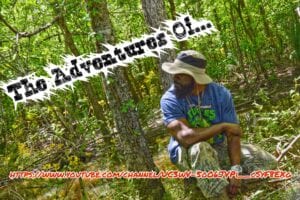 The biggest thing to me in recruiting and I’m going off of my personal experience. Getting that child or kid to be comfortable with being outdoors is the biggest hurdle. I go into school systems. I teach a program called Water Festival where you try to show some water conservation practices, Farm Safety Day and Classroom in the Forest. Getting a kid that’s never been outdoors is the biggest thing to me to where I think we can do a better job. Getting with the local school systems, taking that third-grade class, bringing them down to the farm, allowing them to see, “These are cows. The hamburger that we’re eating at lunch came from these. The hunters or those things that we saw jumping over the road, you can plant stuff and you can watch them. You might not even want to shoot them, but you can enjoy wildlife. You can sit in a blind early in the morning and see how different wildlife reacts normally on their own.”
The biggest thing to me in recruiting and I’m going off of my personal experience. Getting that child or kid to be comfortable with being outdoors is the biggest hurdle. I go into school systems. I teach a program called Water Festival where you try to show some water conservation practices, Farm Safety Day and Classroom in the Forest. Getting a kid that’s never been outdoors is the biggest thing to me to where I think we can do a better job. Getting with the local school systems, taking that third-grade class, bringing them down to the farm, allowing them to see, “These are cows. The hamburger that we’re eating at lunch came from these. The hunters or those things that we saw jumping over the road, you can plant stuff and you can watch them. You might not even want to shoot them, but you can enjoy wildlife. You can sit in a blind early in the morning and see how different wildlife reacts normally on their own.”
The recruitment even people in their twenties, college-age kids, they leave and don’t see the value of land, “I don’t know anybody with land.” You have an elderly gentleman farmer neighbor that you can shadow. I’m pretty sure that if you say, “I want to help you on your farm. Can I get two cows and put on there?” More than likely, those older farmers are going to see that spark and they’re going to say, “I have the land. I will lease it to you for little to nothing.” I usually give this analogy. I don’t have to have big numbers. You have five mama cows. All five of those mama cows have a calf. You sell those five calves at the market for X amount of dollars and you’re holding that real money in your hand. You can change a lot of minds that way. Deer hunting is the same way. I have this land that hasn’t been anything done to it. With a little care, a little wildlife opening, a little bit of watching, and the next thing you know, you’ve got the first deer that you ever shot. Now you’re bitten by the bug.
You’re out here thinking of other ways how to improve the land. That’s where conservation comes into play, “How do I increase my soil organic layer? I know some people at the Extension. I saw Chris on his YouTube channel talk about doing a soil test. What’s a soil test? Let me go to so-and-so and ask.” Recruiting is about showing a person something that’s in layman’s terms. We get a little too specific thinking that everybody came into the game advanced. A lot of people are fresh. I speak on my YouTube channel as if I’m talking to my nephew or nieces. It’s very simple, “We’re going to walk this trail.” They go, “I’m walking through the woods.” I’m like, “I don’t walk through the tall bushes, let’s find us a little trail. This trail is made by something.” They go, “What’s that made by?” “Those are deer trail.” They go, “A deer trail?” Now you’ve got them interested and, “What’s a deer trail? Why do they walk through the woods like that? Why do they pick these areas?”
You can recruit going off a walk in the woods. That’s the biggest thing to me that is most effective, just trying to show them that at this point you can find out about birds, you can find out about animals, everything. You can make a career out of this if that’s something you like to do. That’s what I went into, agribusiness. I use my book knowledge but I also have some knowledge prior to that. Recruiting is all about trying to make it easy enough to where the average person or average citizen will have a better understanding. They may not like guns but they can appreciate the outdoors. If you can show people that, “We hunt but we do all these things leading up to the hunt.” We go out and we make brush piles for rabbits. We’re creating all kinds of habitat. We’re helping birds. We’re helping everything. You can put a spin on it to where you might reach that person a little better by saying, “I’m not going to bring in the gun and shooting but I’m going to bring in the whole of nature and you can walk through the woods.” If you have a camera, feel free to take photography and those kinds of things. We can ride you around, “We’re going to stop at this area. It’s neat. There’s an old abandoned house out here. Take time.”
College-age kids leave, and they don’t see the value of land. Share on XMy second brother is a painter. He goes out in the woods while I’m out doing deer stuff, he’s out painting nature scene, selling paintings. He doesn’t like to hunt but he knows about the value of outdoors and how nature looks and ways that you can show somebody else. Through his paintings, he’s showing, “This is nature.” To a person that doesn’t go outdoors like that they’re like, “Let’s see.” They can find local areas or local people that open their doors to them to take them on a tour or a nature walk. There are plenty of state and federal lands that people can go on to make that. If you’ve got a neighbor right down the street that’s offering that, a lot of people will take that invitation. That’s where I preach the loudest is showing people through my YouTube and my social media pages that this can be done. You don’t have to let the land grow up into whatever. You can manage it. There are tools out there. I work with an agency that provides those financial assistance programs for land improvement. You can look up at any USDA programs related to wildlife habitat and you will find something that will help. That’s where I will leave that.
How do people get a hold of you? Tell us your YouTube channel, Instagram, Facebook, your email and all that.
My Instagram is @TheAdventuresOf_Breeze. That’s my main Instagram. My YouTube channel, you can look me up on there. It’s called The Adventures Of Breeze. You can Google or search “Cool Breeze” and you will see me on there. I think those are the main ways you can get in touch with me. I also want to plug Joe’s Black Angus Farm. We have a lot of cows and different deer. We have one or two. We have beef cows. We’ve got some ready for slaughter. We have some ready to sell if you’re using on your property to increase your herd. Either way, you can call dad and tell him what you want. You might make a trip down to Alabama to get them.
How do they get a hold of dad?
His number is (334) 624-9084.
What’s your dad’s first name?
Cornelius Joe.
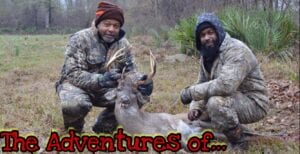 I’m pleased that Christopher Joe selected me to be part of his program to help him reach the people that I know, our audience. He’s bringing a different insight. Christopher, thanks so much and I appreciate you spending the time with us.
I’m pleased that Christopher Joe selected me to be part of his program to help him reach the people that I know, our audience. He’s bringing a different insight. Christopher, thanks so much and I appreciate you spending the time with us.
I appreciate it. Thank you so much. I’m looking forward to it.
Important Links:
- Christopher Joe
- Outdoor Channel
- Weather Underground
- USDA
- @TheAdventuresOf_Breeze on Instagram
- The Adventures Of Breeze on YouTube channel
